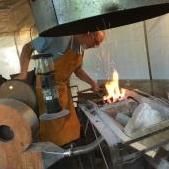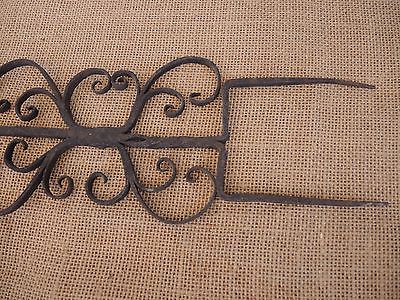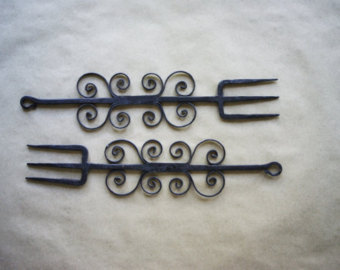
rwolfe
Members-
Posts
36 -
Joined
-
Last visited
Profile Information
-
Gender
Male
-
Location
South Bend, Indiana
Recent Profile Visitors
1,873 profile views
-
the vernacular gates in your country/area
rwolfe replied to Hephaestus Smith's topic in Blacksmithing, General Discussion
Thanks for the video. Good stuff. Not too many wrought iron farm gates in the US. You see them more in cemeteries and well-to-do historic homes. -
Musket trigger guard material
rwolfe replied to Jonathan Snell's topic in Gunsmithing, Muskets, Flintlocks etc
Jim Chamber's makes great locks. Take a look at this one: http://www.flintlocks.com/locks4.htm (round-faced English). It's suitable for a musket/fowler. -
Well, as to worth, I paid $3 for it so it's worth at least that much!
-
I found these two images on Google Pictures. Both being described as roasting forks. Similar enough to mine i think I'll go with that unless better information comes in. Roasting fork sound better that pot trellis!
-
I was just given this suggestion by Kelly Kring on my state blacksmithing site. "These are very stylistically Pennsylvania Dutch ironwork pieces. Both most likely late 1700's-early 1800's. The fork is a meat fork. It's believed to be used for cooking meat by the hearth and the scrolls allowed it to be laid across a trivet or some other fire tool that propped up the fork end out of the coals. The loop was to hang it from a nail next to the hearth when not in use."
-
Thanks for the replies. Never heard of a pot trellis. Sounds reasonable though. Did a search on "pot trellis" and "antique pot trellis" and did not see very close but that doesn't mean it isn't one.
-
My wife and I were out today in northern Indiana today and stopped by a few antique stores for some browsing and I saw these two old blacksmithed items in the same booth. They were cheap - $3 each - so I picked them up. I am confident the spatula is old and would have paid more for it. Anyone have an idea when this pattern went out of style? I'd like to think it could be Colonial. I have no clue to what the second item is. Anyone have an idea? The elements are nicely forge welded together in the center. I think this item is old but for some reason it doesn't "feel" as old as the spatula. What do you think?
-
Well done!
-
Cups for candles are a pretty obvious use. Here are some interesting (aberrant) antlers that I used to make candlestick holders using pipe for the cups.
-
I just saw one of these last weekend and it uses two leather belts, each wrapped around the shaft in opposite directions. That way the shaft spun on both the up and down motion of the handle. Of course the dogs only engage in one direction to turn the blower. The second belt only serves to rewind the belt that drives the blower. Pretty slick.
-
Frosty, had to get a new grate for the tuyere - ended up using a cast iron floor drain cover. Fired it up and it works great. You have to get a little rhythm going with the handle. Wayne, thanks for the name - sounds better than pump forge.
-
Thanks for the info!
-
I recently picked up this small forge for $100 to use for demonstrations. I already had a small "rivet" forge that has a hand cranked blower that I currently use but just like the looks of the hand pump action on this one. It was missing the wooden handle and was quite dirty. I made a new handle, cleaned it up and then somehow it ended up getting painted. I don't think it was originally painted as there was no remnant paint on it even back in various crevices. The only marking on it is cast onto the bottom of the pan: "No. 100." The action is remarkably smooth and it moves air quite well. Can anyone tell me anything about this style of forge? Does it have a name? Are they earlier than the crank style? Thanks.
-
Well, I think I'll keep the ash dump open in the future. Seems prudent! Thanks for the comments.
-
Had a bizarre event happen today. I was working with two Boy Scouts on metalwork (blacksmithing) merit badge and we were going to be away from the forge for about 20-30 minutes so I turned off the blower and banked the fire with a couple of scoops of green coal. About 5 minutes later there was a loud bang and a flash and the 4 inch diameter flexible ducting that connected the blower to the forge flew across the room. The banked fire did not appear to move; at least we did not notice it. Needless to say, we were quite startled. I can only assume that when I banked the fire unburned gases were somehow forced into the ducting and then ignited. I’ve never had anything like that happen before – has anyone else?



cropped.thumb.jpg.5fd7a7e0952f321267bfc0e2568bc891.jpg)
cropped.thumb.jpg.3ab152ab477081ef6021459df588c802.jpg)